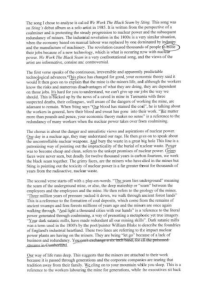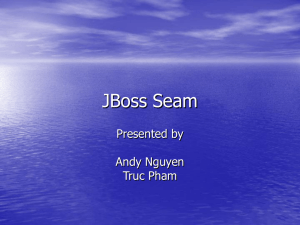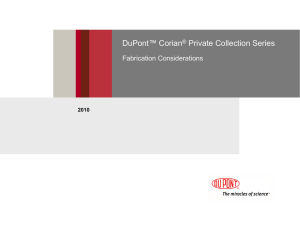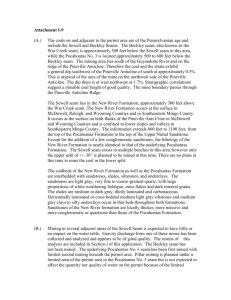Textiles and Clothing —Seams: Quick Definitions—
advertisement
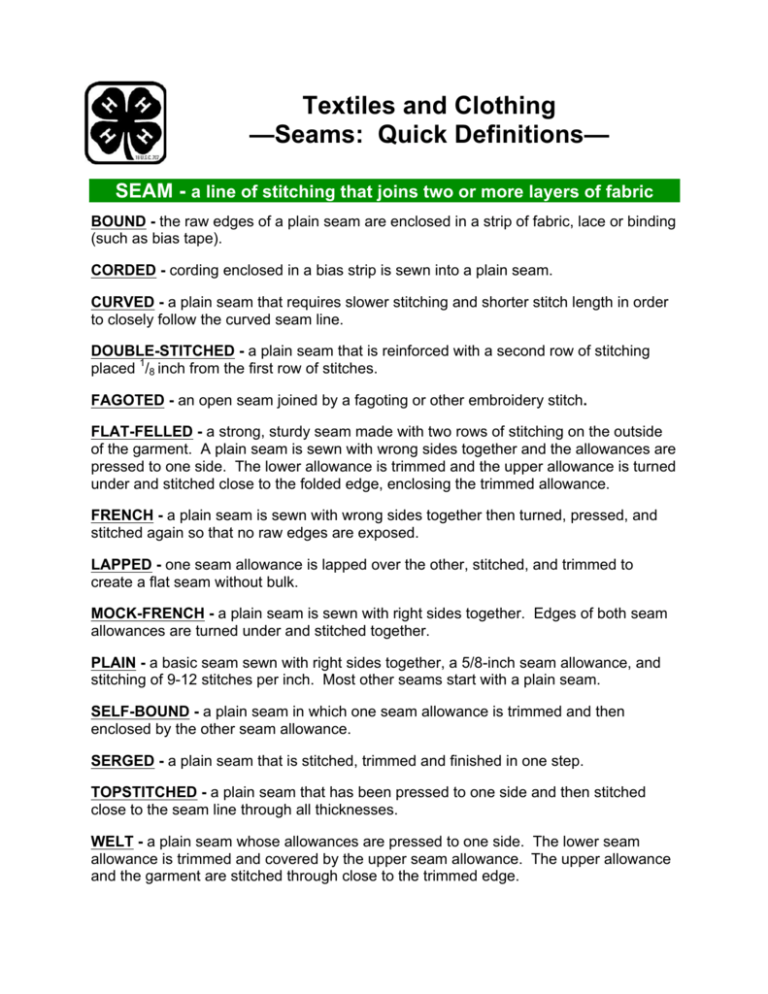
Textiles and Clothing —Seams: Quick Definitions— SEAM - a line of stitching that joins two or more layers of fabric BOUND - the raw edges of a plain seam are enclosed in a strip of fabric, lace or binding (such as bias tape). CORDED - cording enclosed in a bias strip is sewn into a plain seam. CURVED - a plain seam that requires slower stitching and shorter stitch length in order to closely follow the curved seam line. DOUBLE-STITCHED - a plain seam that is reinforced with a second row of stitching placed 1/8 inch from the first row of stitches. FAGOTED - an open seam joined by a fagoting or other embroidery stitch. FLAT-FELLED - a strong, sturdy seam made with two rows of stitching on the outside of the garment. A plain seam is sewn with wrong sides together and the allowances are pressed to one side. The lower allowance is trimmed and the upper allowance is turned under and stitched close to the folded edge, enclosing the trimmed allowance. FRENCH - a plain seam is sewn with wrong sides together then turned, pressed, and stitched again so that no raw edges are exposed. LAPPED - one seam allowance is lapped over the other, stitched, and trimmed to create a flat seam without bulk. MOCK-FRENCH - a plain seam is sewn with right sides together. Edges of both seam allowances are turned under and stitched together. PLAIN - a basic seam sewn with right sides together, a 5/8-inch seam allowance, and stitching of 9-12 stitches per inch. Most other seams start with a plain seam. SELF-BOUND - a plain seam in which one seam allowance is trimmed and then enclosed by the other seam allowance. SERGED - a plain seam that is stitched, trimmed and finished in one step. TOPSTITCHED - a plain seam that has been pressed to one side and then stitched close to the seam line through all thicknesses. WELT - a plain seam whose allowances are pressed to one side. The lower seam allowance is trimmed and covered by the upper seam allowance. The upper allowance and the garment are stitched through close to the trimmed edge.
